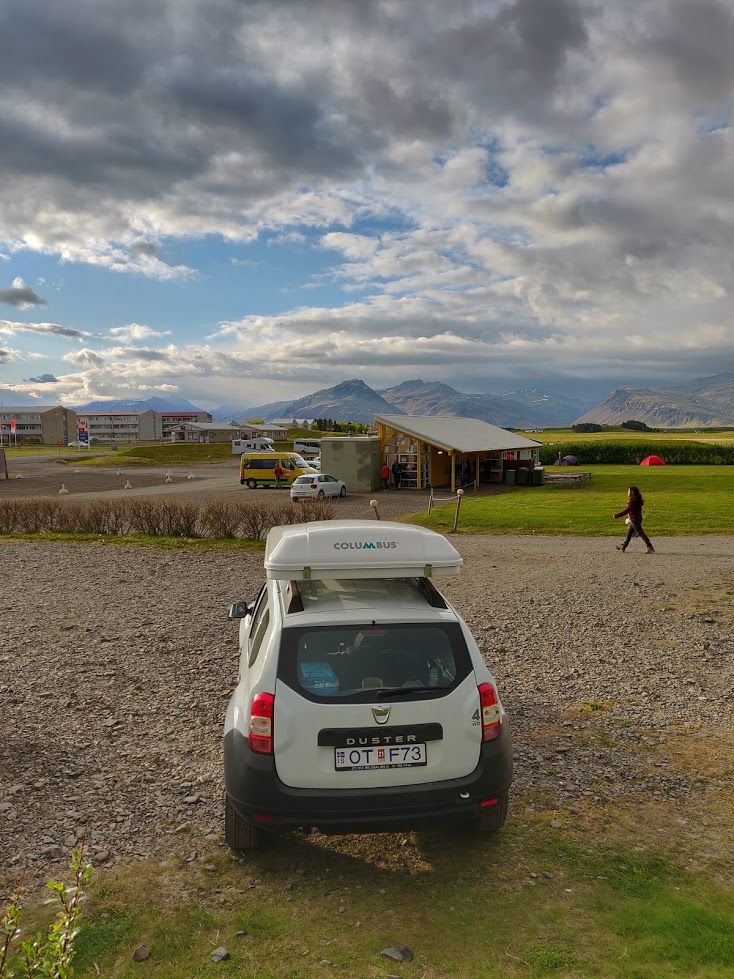Feeling refreshed after a real sleep (even if it was never actually dark), we packed down the tent and headed for Skógafoss. We climbed the rickety, meandering staircase up the side of the mountain. Apparently our fitness had deteriorated over months of staying inside during the Toronto winter as we were struggling near the top. This path lead to a viewpoint looking down on the waterfall and is also the start of a popular hike that takes you to the glacier feeding the river and waterfall.

Skógafoss is one of the stops the tour buses from Reykjavík take, and the crowds grew considerably with their arrival. There are a lot of sheep and lambs roaming free and it was entertaining to watch people so interested in them. Kind of like us with squirrels in Canada!

Back on the road, our next stop of the day was Reynisfjara Beach. We stopped for a coffee and to write yesterday's blog post, before exploring the massive rock formations and caves along the black sand beach.
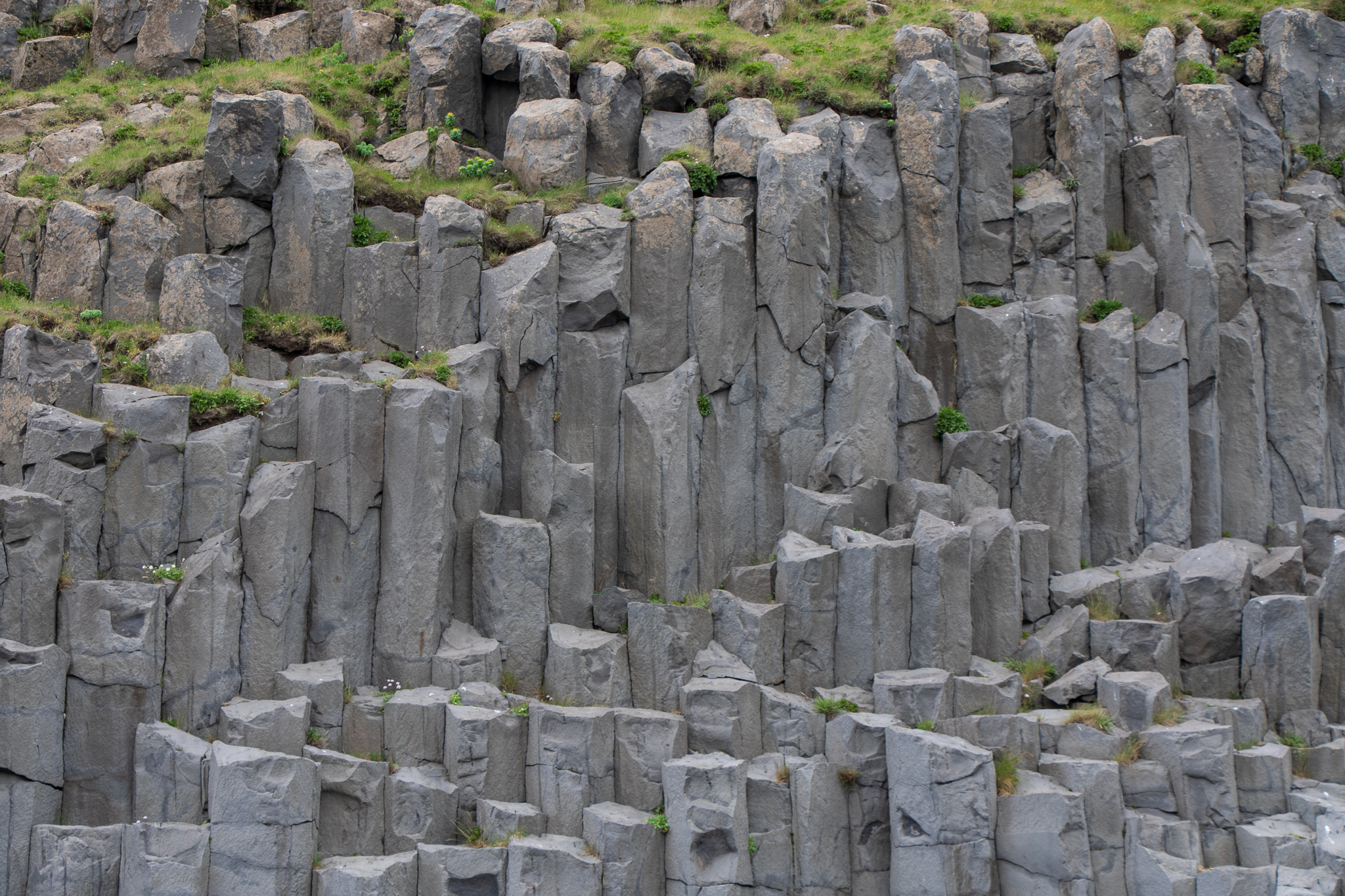

According to legend, Reynisdranger Seastacks were formed when a couple of trolls saw a ship out to sea by night, and waded out to catch it. They began to drag it to shore, but got their timing wrong. Before they reached shore, dawn broke and the trolls and ship were instantly frozen into stone.

This beach is also infamous for its sneaker waves! With no large land masses between Antarctica and Reynisfjara the waves have the entire length of the Atlantic to build in size and strength. Waves at the beach seemingly come out of nowhere and there have been several tourist deaths in recent years.

Our next pit stop of the day was for a sandwich in a carpark overlooking the town of Vik. We had struggled a little in the supermarket yesterday, trying to translate the names of a huge variety of sauces. Eventually we settled on one that turned out to be béarnaise, not really what we wanted, but not terrible! After lunch we went to another supermarket at the bottom of the hill to get some more bread and ice for our chilly bin, and Sean got some dried fish called hardfiskur, which is kind of like fish jerky.

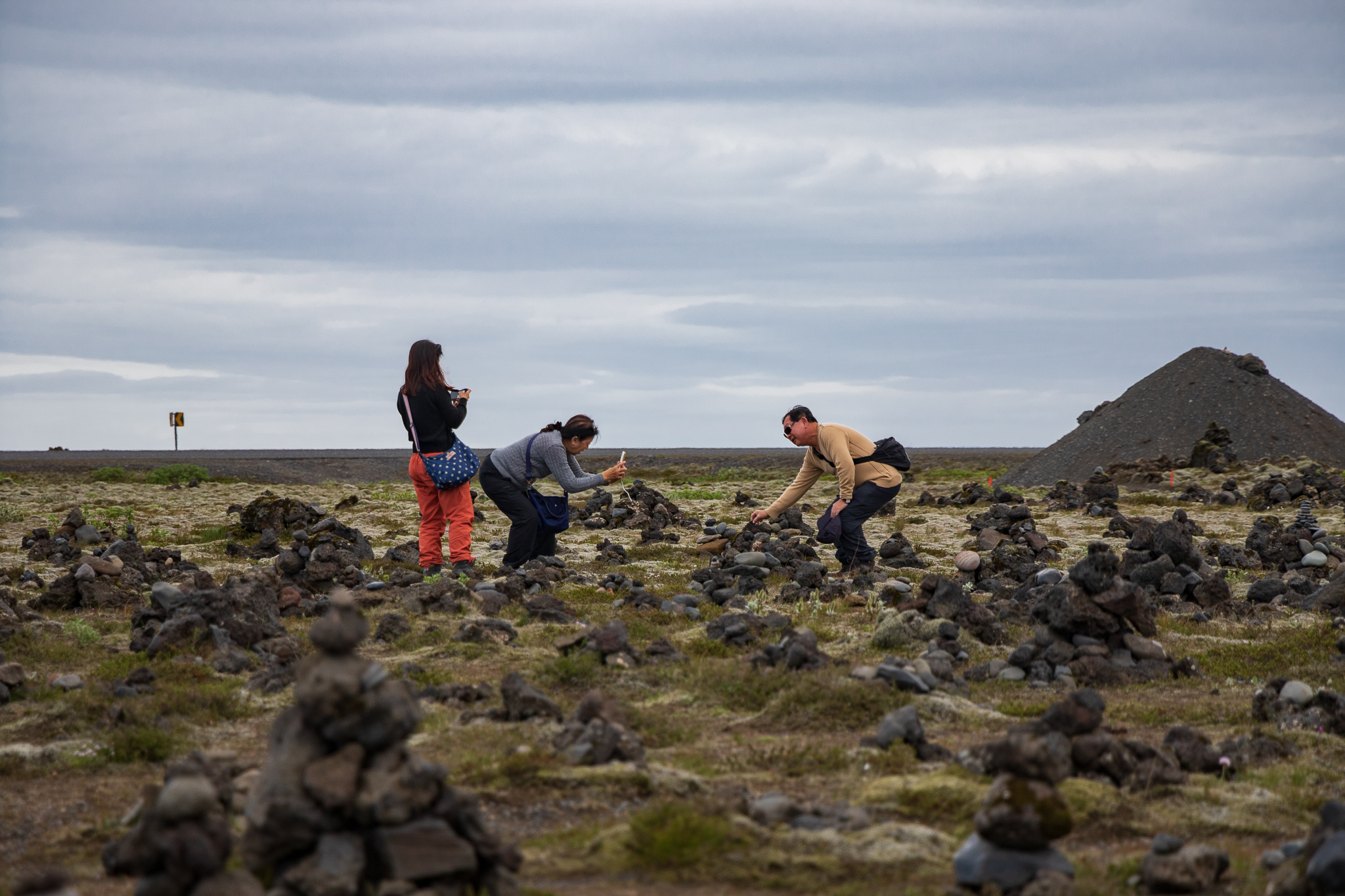
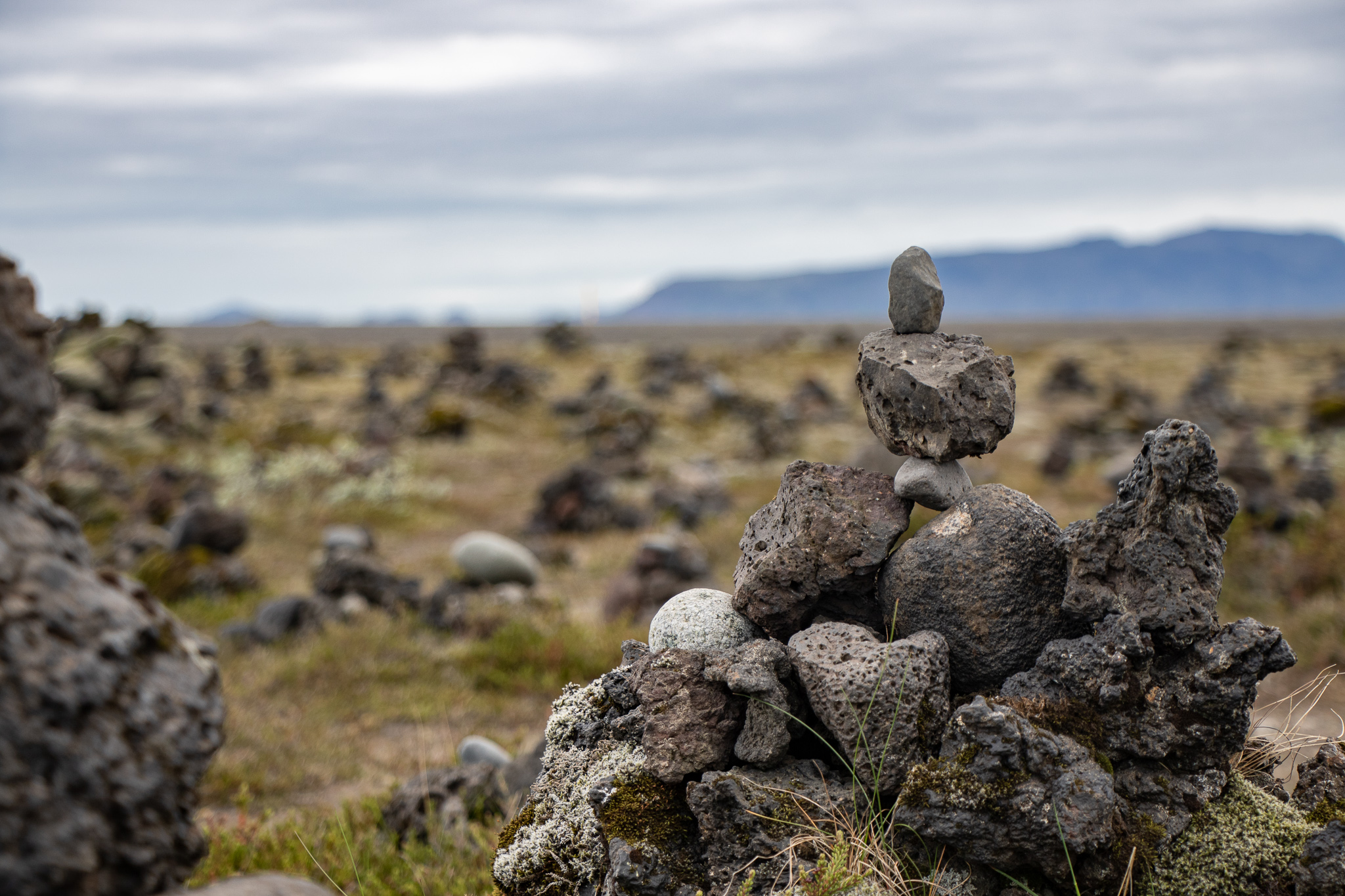

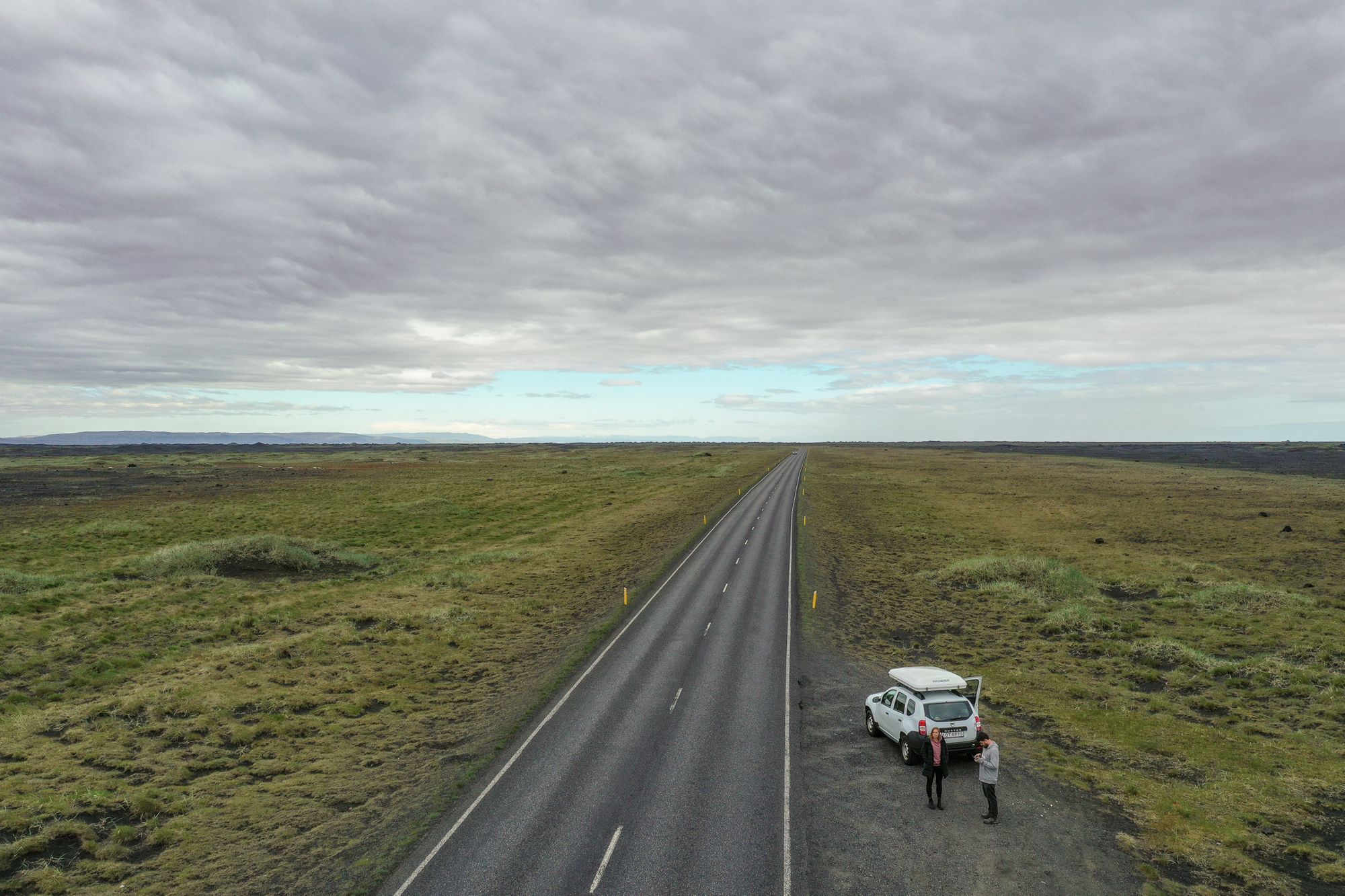

After our lunch stop, we got back on the Ring Road headed for Jökulsárlón Glacier Lagoon. We drove through the Mýrdalssandur desert, which has been formed by glacial outbursts (called ) from the nearby glacier Mýrdalsjökull. Katie thought that the landscape here felt a lot like Rangitoto. Along the road we came across Laufskálavarða, which is a lava ridge surrounded by small stone cairns. Travellers across the desert of Mýrdalssandur would stop here and add a stone to a pile, to bring them good luck.
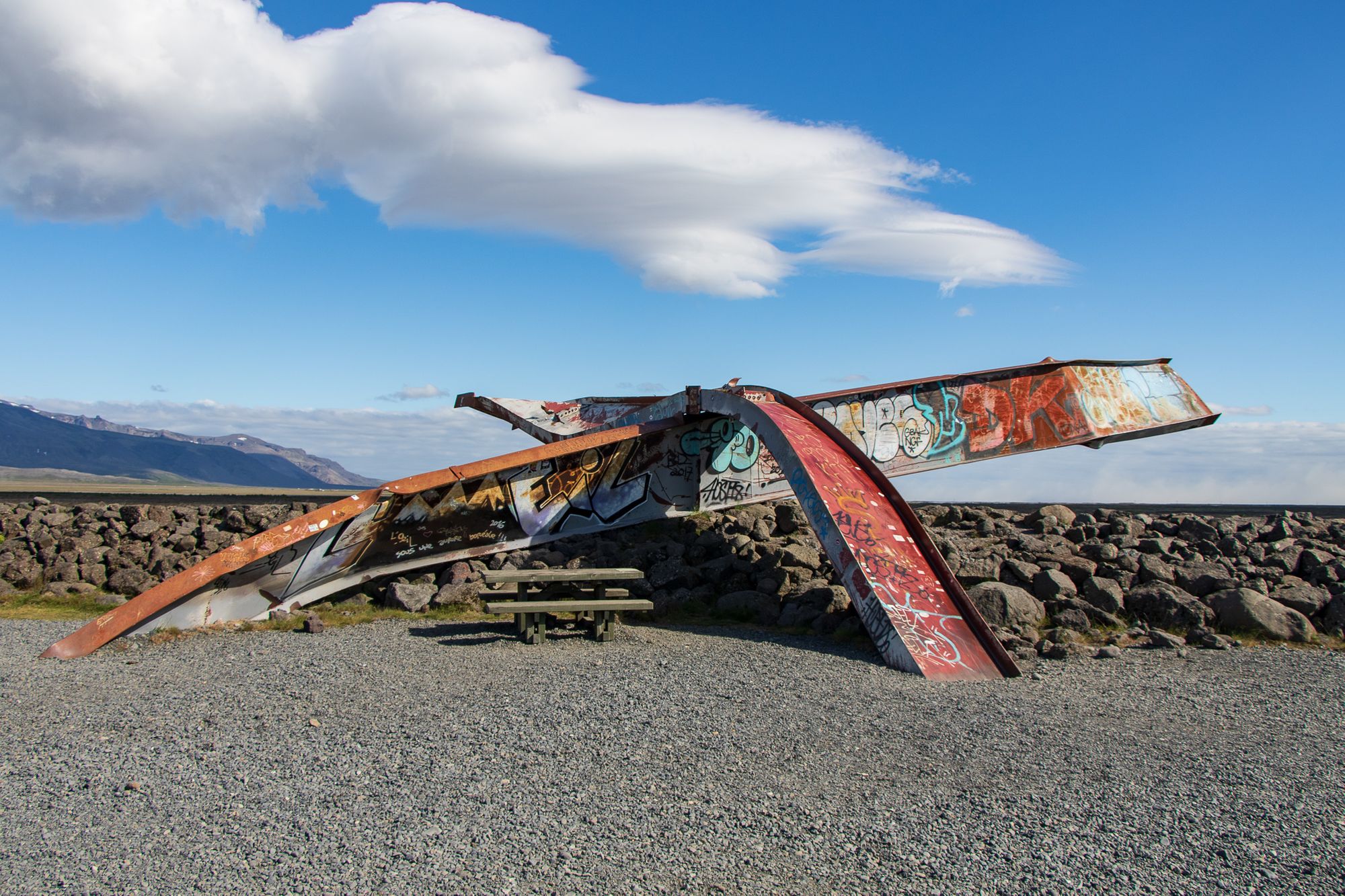
Further along we entered Skeiðarársandur, which is a vast volcanic sand plain. We stopped at the Skeiðará Bridge Monument which tells the story of a bridge (once the longest in Iceland) that was washed away during a glacial outburst of the Skeiðarárjökull glacier caused by an eruption of Vatnajökull. The hot magma melted the underside of the glacier sitting on top of it, and eventually the pressure of the water became too great and it burst out the bottom of the glacier. After this morbid reminder of the raw power of nature, we carried on to Jökulsárlón.

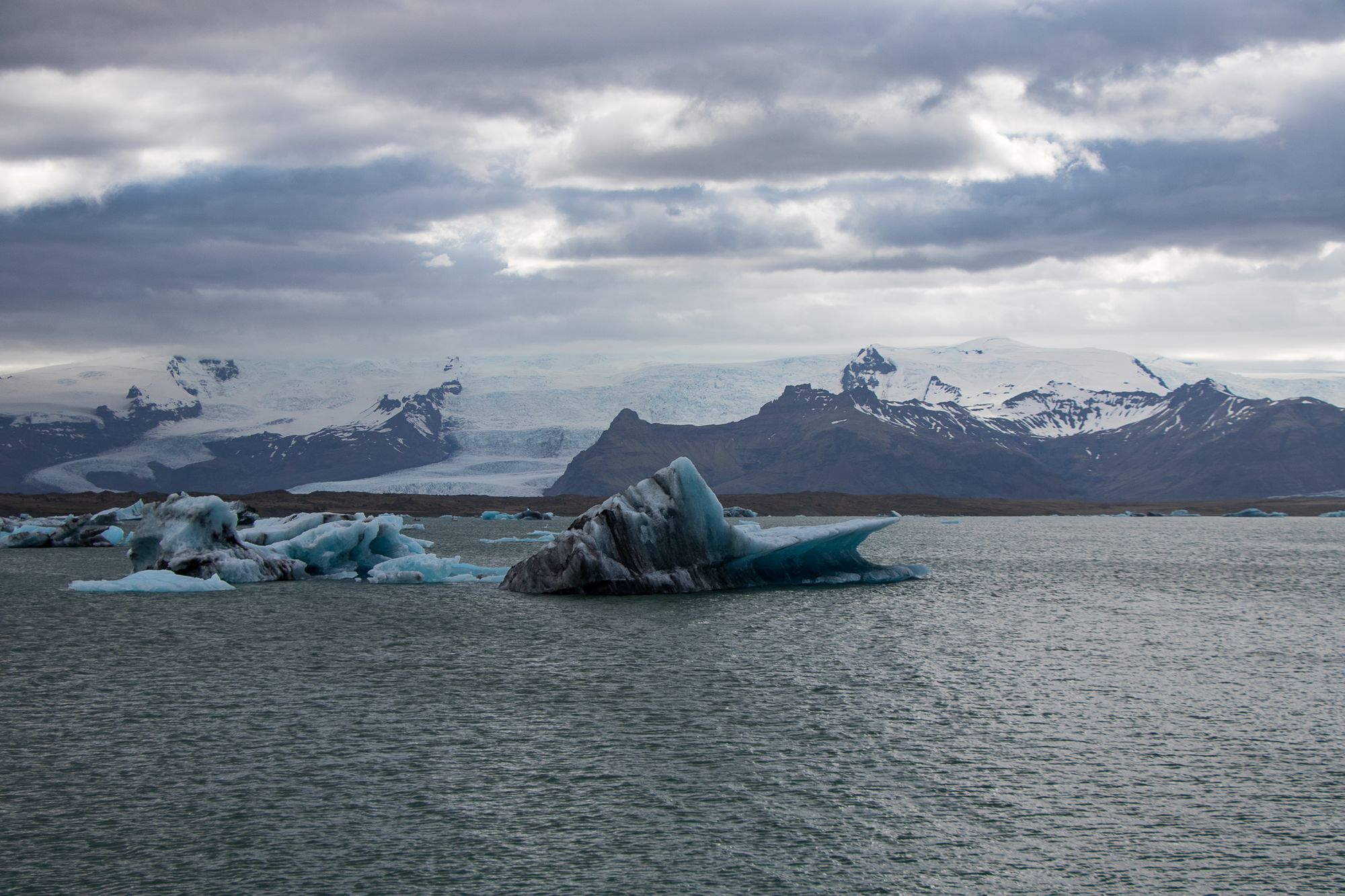
Jökulsárlón is a glacier lagoon at the base of the Breiðamerkurjökull glacier. It's unique in that it's connected directly to the sea. Because of the salinity and the warmer temperature of the sea, combined with the movement of the tide, this glacier is receding at 500m per year, much faster than any other in Iceland (and not directly cause by global warming!). On windy days, the lagoon is filled with small icebergs that have broken off the glacier and been blown down toward the road. Although the lagoon was nowhere near full today, there were still plenty of big chunks floating around.

We went out on an amphibious boat tour to get closer to some of the icebergs. The rest of our group was made up of French tourists, so the guide accommodated them by doing his whole presentation in French. Not having picked up much French during our week in Québec, we had a bit of trouble following along. Luckily there was another couple from Chicago who told the guide that they didn't understand him, so he gave us a rundown in English.
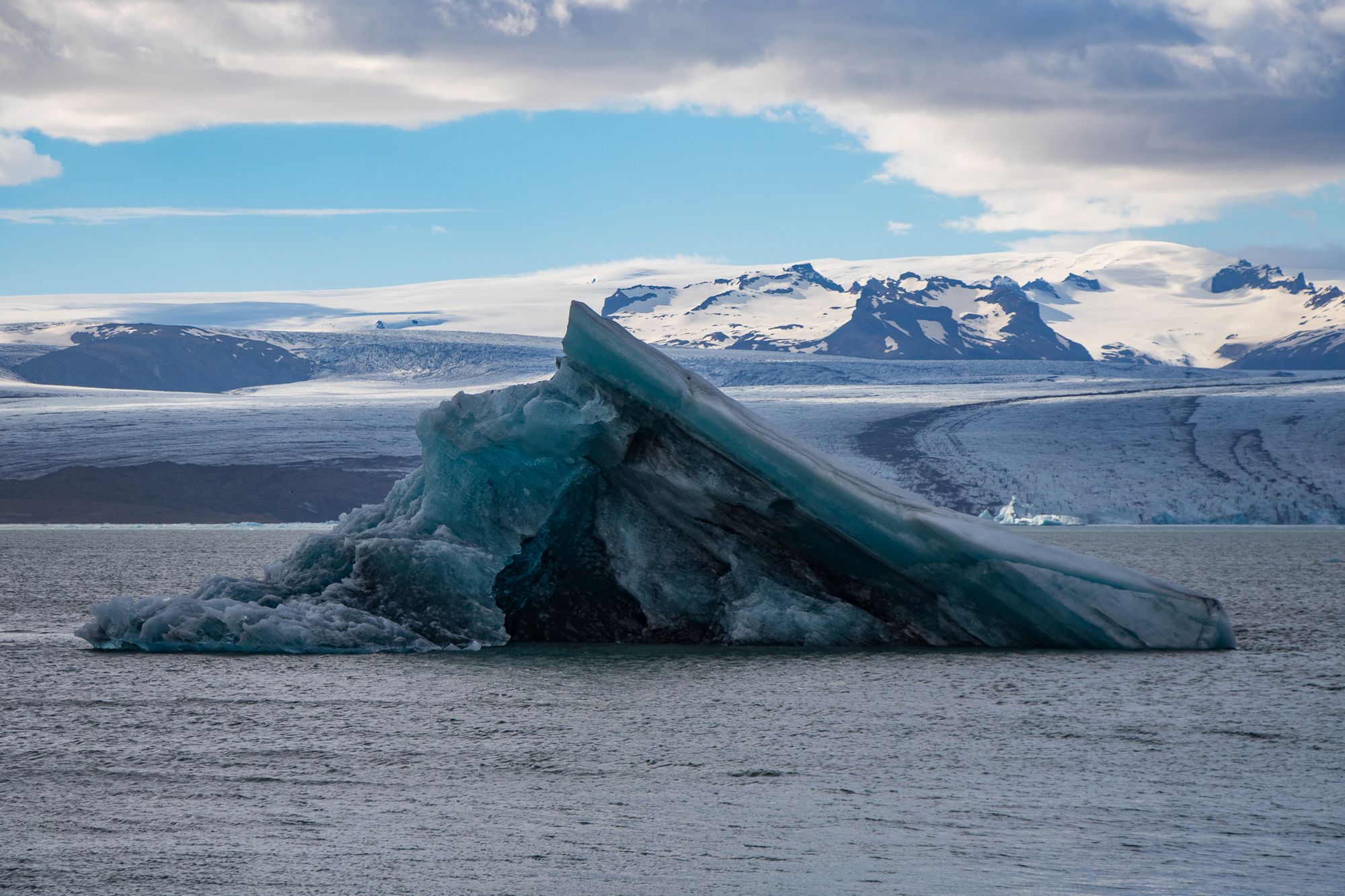
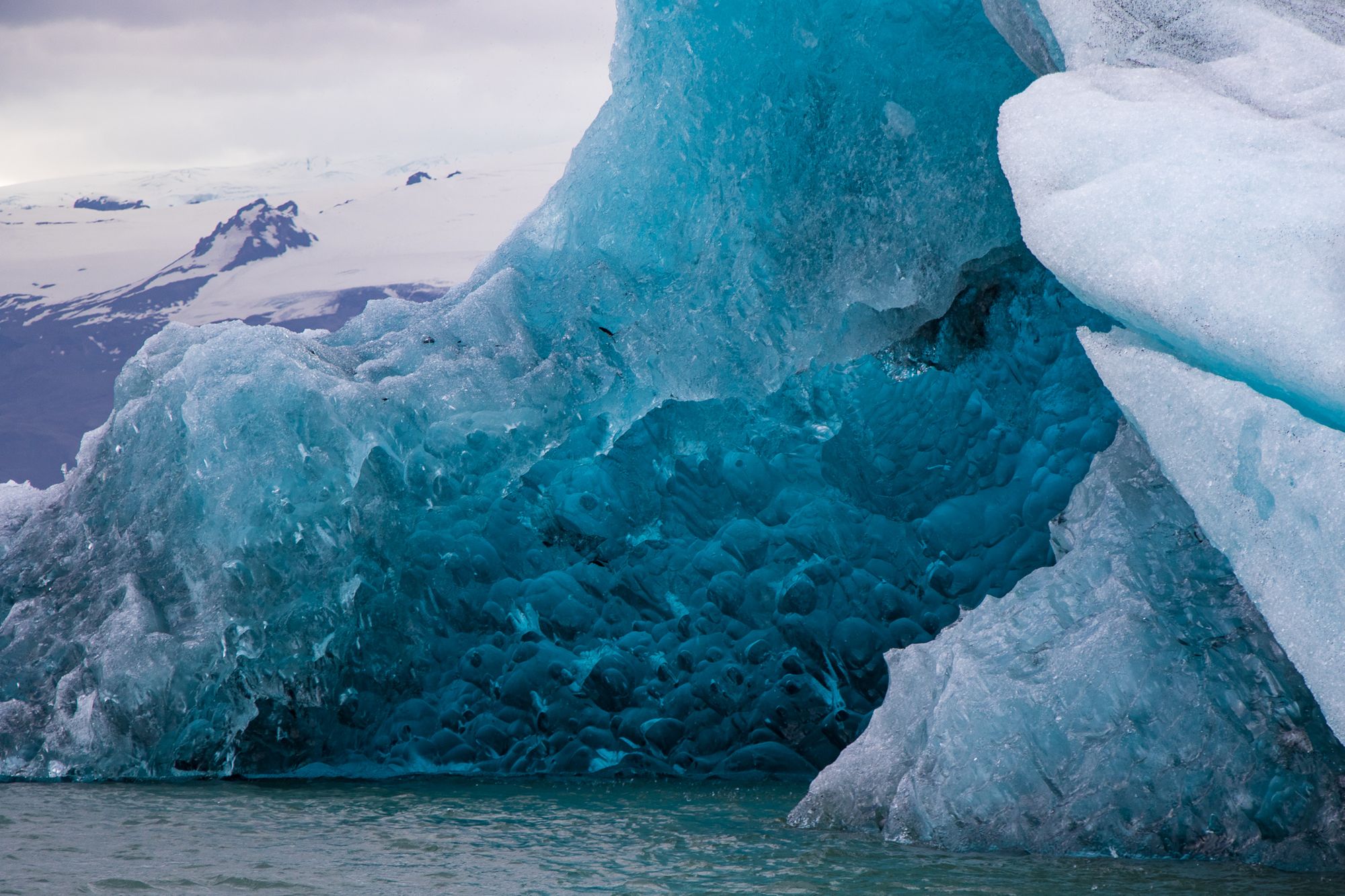
The icebergs were amazing colours, ranging from white with black stripes to deep deep blue. The colour depended on how long they had been sitting in the lagoon; they start out blue, and gradually become white as the outside weathers and becomes rough. As they're melting, sometimes they break, causing a change in their centre of gravity which often makes them flip over, exposing shiny clean ice again. Some of the icebergs have dark colouring caused by ground-up rock. Others have sharply defined black stripes from volcanic ash which fell on the glacier and was subsequently covered by more snow and ice.
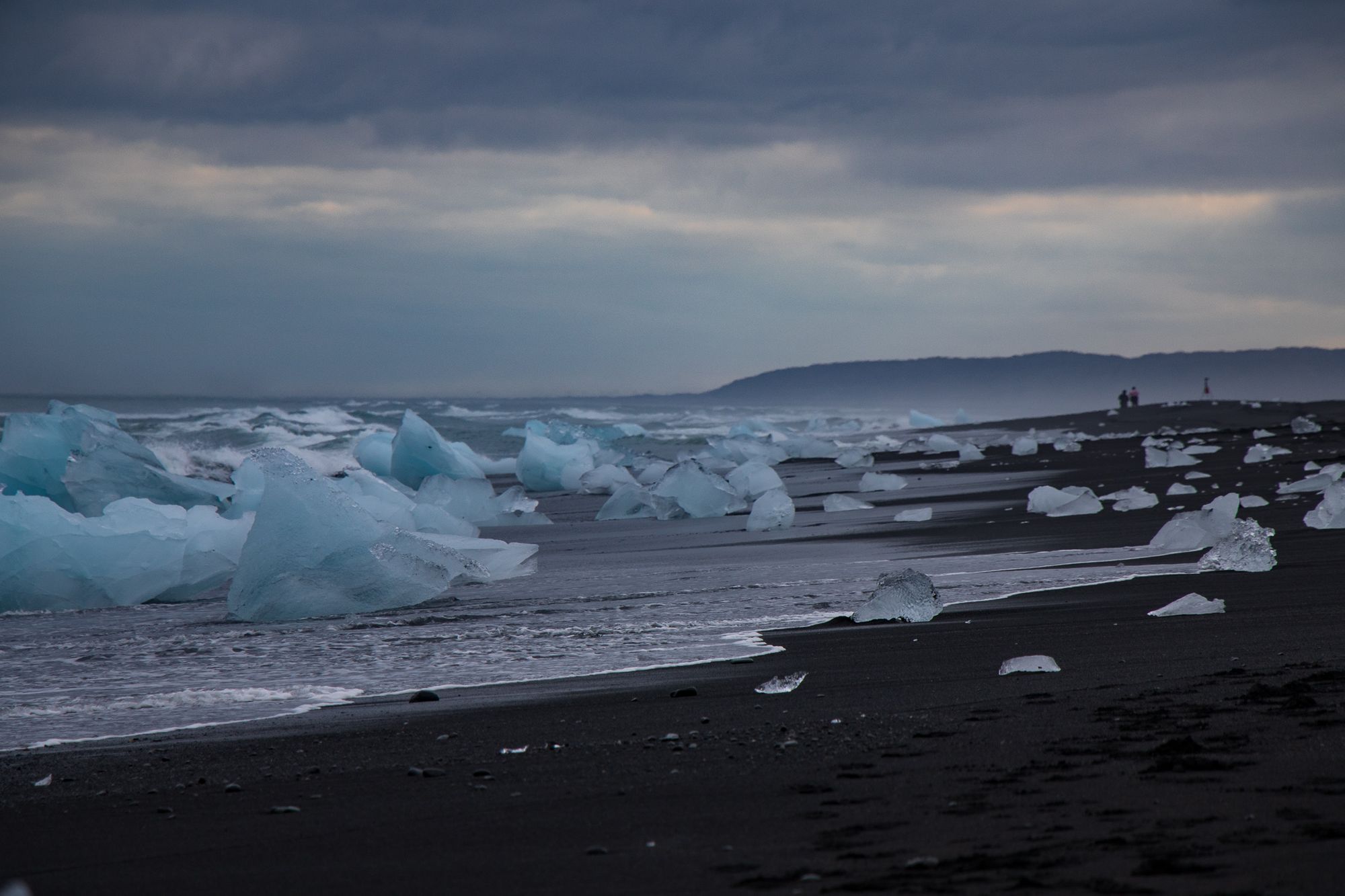
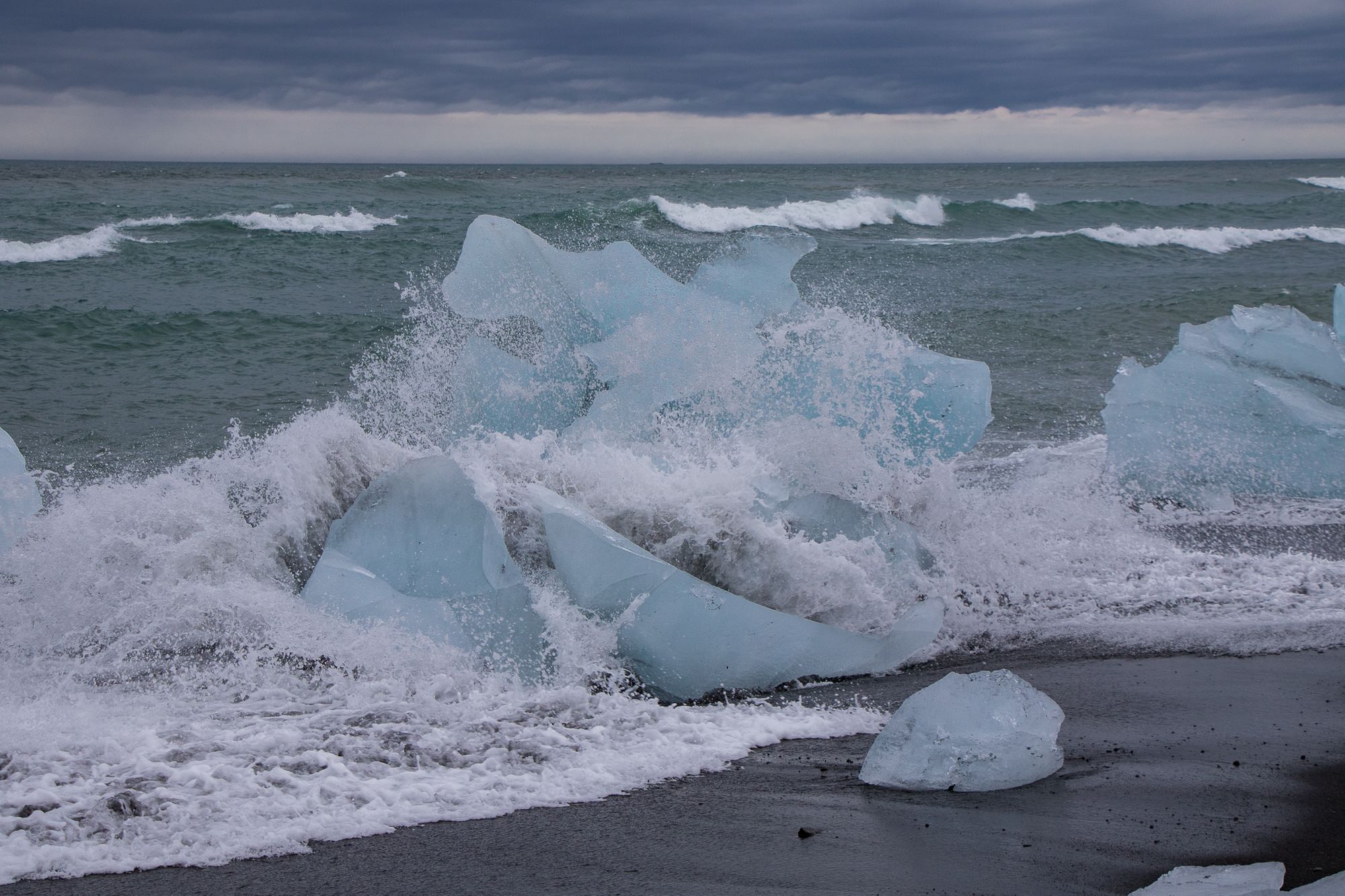
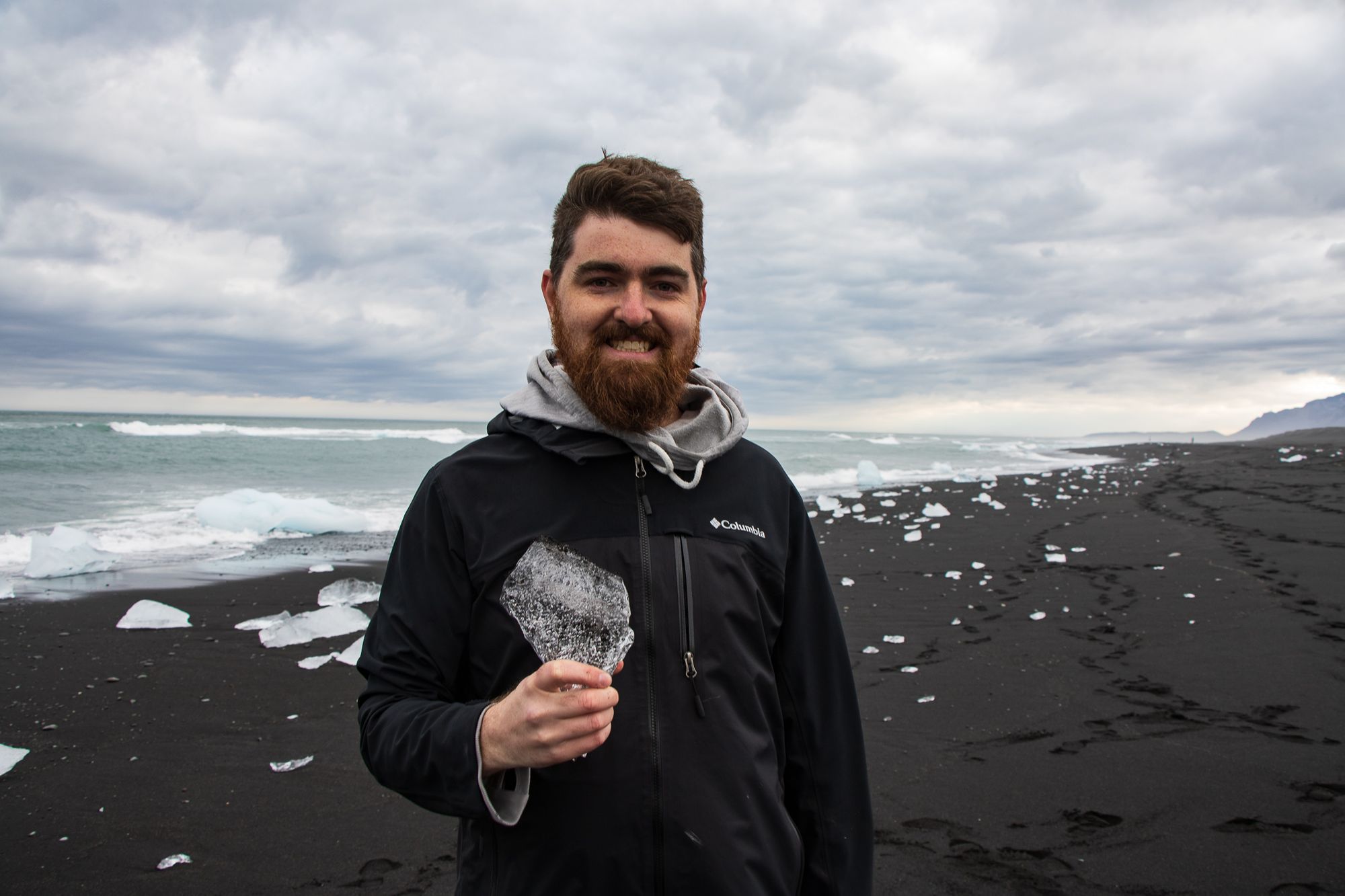
After our tour, we crossed the road to Diamond Beach. As the ice bergs leave the lagoon, the swell washes them back up onto the beach where they melt and break apart. The result is a shoreline strewn with little shiny ice shards, which sparkle like diamonds.
From here we drove on to Höfn, which was our stop for the night.
